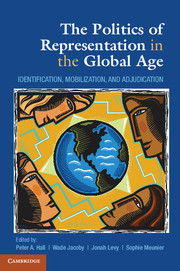Book contents
- Frontmatter
- Dedication
- Contents
- Abbreviations
- Acknowledgments
- Foreword
- 1 Introduction
- Part I The Politics of Interest Representation
- Part II Responding to the Challenges of a Global Era
- 4 Globalization and the Politics of Trade Union Preferences in France
- 5 Public-Private Institutions as Social and Knowledge Bridges
- 6 Reorganizing Representation in Latin America in the Neo-Liberal Age
- Part III New Institutional Settings for Representation
- Short Biographies of Editors and Contributors
- Index
- References
5 - Public-Private Institutions as Social and Knowledge Bridges
Reconfiguring the Political Boundaries for Economic Upgrading
Published online by Cambridge University Press: 05 June 2014
- Frontmatter
- Dedication
- Contents
- Abbreviations
- Acknowledgments
- Foreword
- 1 Introduction
- Part I The Politics of Interest Representation
- Part II Responding to the Challenges of a Global Era
- 4 Globalization and the Politics of Trade Union Preferences in France
- 5 Public-Private Institutions as Social and Knowledge Bridges
- 6 Reorganizing Representation in Latin America in the Neo-Liberal Age
- Part III New Institutional Settings for Representation
- Short Biographies of Editors and Contributors
- Index
- References
Summary
How can developing countries upgrade their industries to compete in the world? Scholars of development and international business have increasingly argued that the attendant ability of local firms to upgrade – combine existing resources in new ways to create new higher value products – depends in large part on their access to a variety of knowledge resources (Moran and Ghoshal 1999; Song 2002; Giuliani, Pietrobelli, and Rabellotti 2005). However, it is less clear what types of institutional infrastructure facilitate such access.
A growing current in the innovation literature argues that access to knowledge depends often on whether firms are embedded in rich interfirm networks, which enable them to build collaborative relationships, gain resources, learn, and coordinate experiments (Powell, Koput, and Smith-Doerr, 1996; McEvily and Marcus 2005). However, scholars also note how the stickiness of past firm practices, social structures, and institutions are slow to change and can constrain one's access to new knowledge resources (Uzzi 1996). This enabling and constraining nature of embeddedness resonates strongly in emerging market countries (Spicer, McDermott, and Kogut 2000), and especially Latin America, where societies are often noted for their weak institutions and social capital (Levitsky and Murillo 2005).
- Type
- Chapter
- Information
- The Politics of Representation in the Global AgeIdentification, Mobilization, and Adjudication, pp. 100 - 125Publisher: Cambridge University PressPrint publication year: 2014
References
- 1
- Cited by



